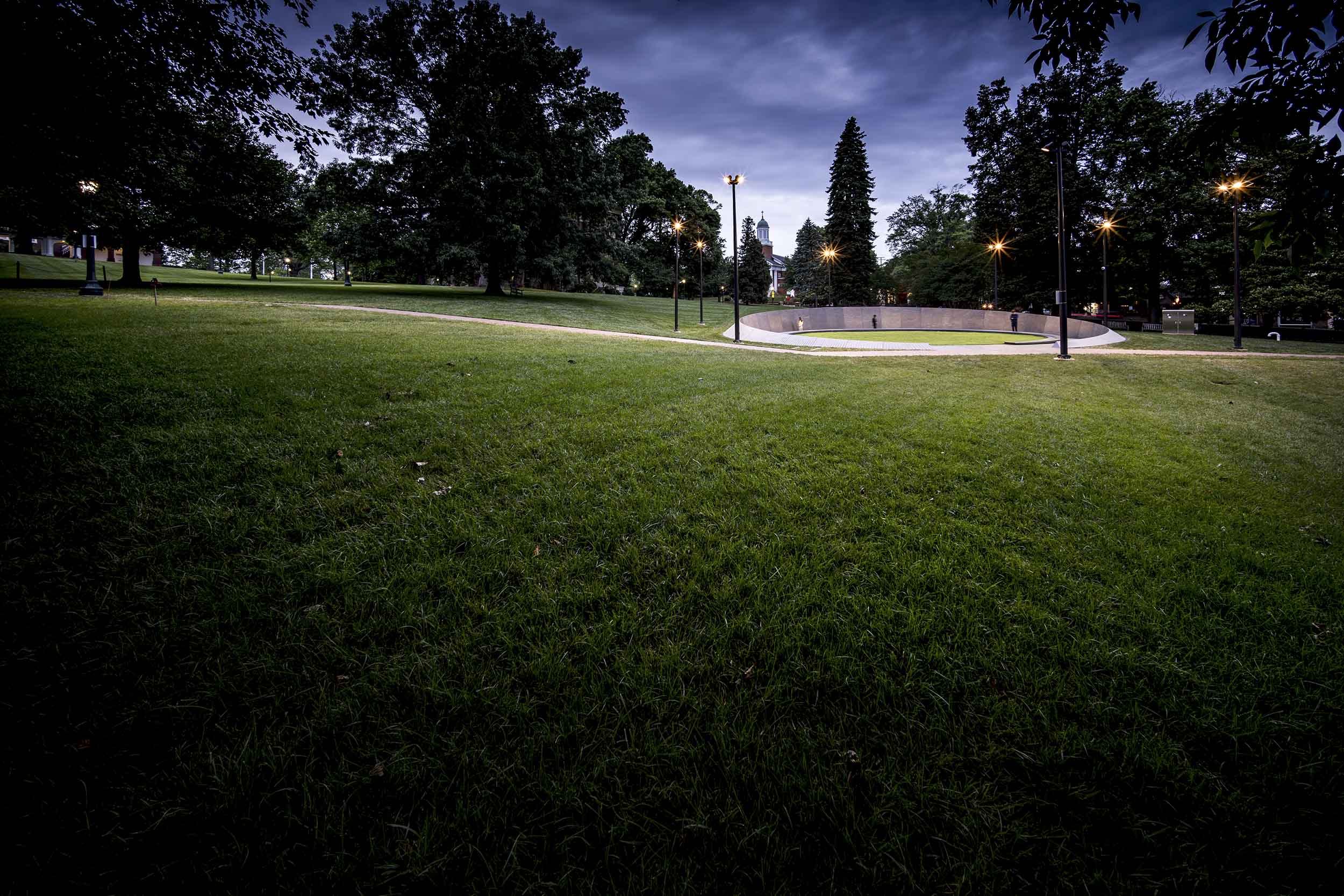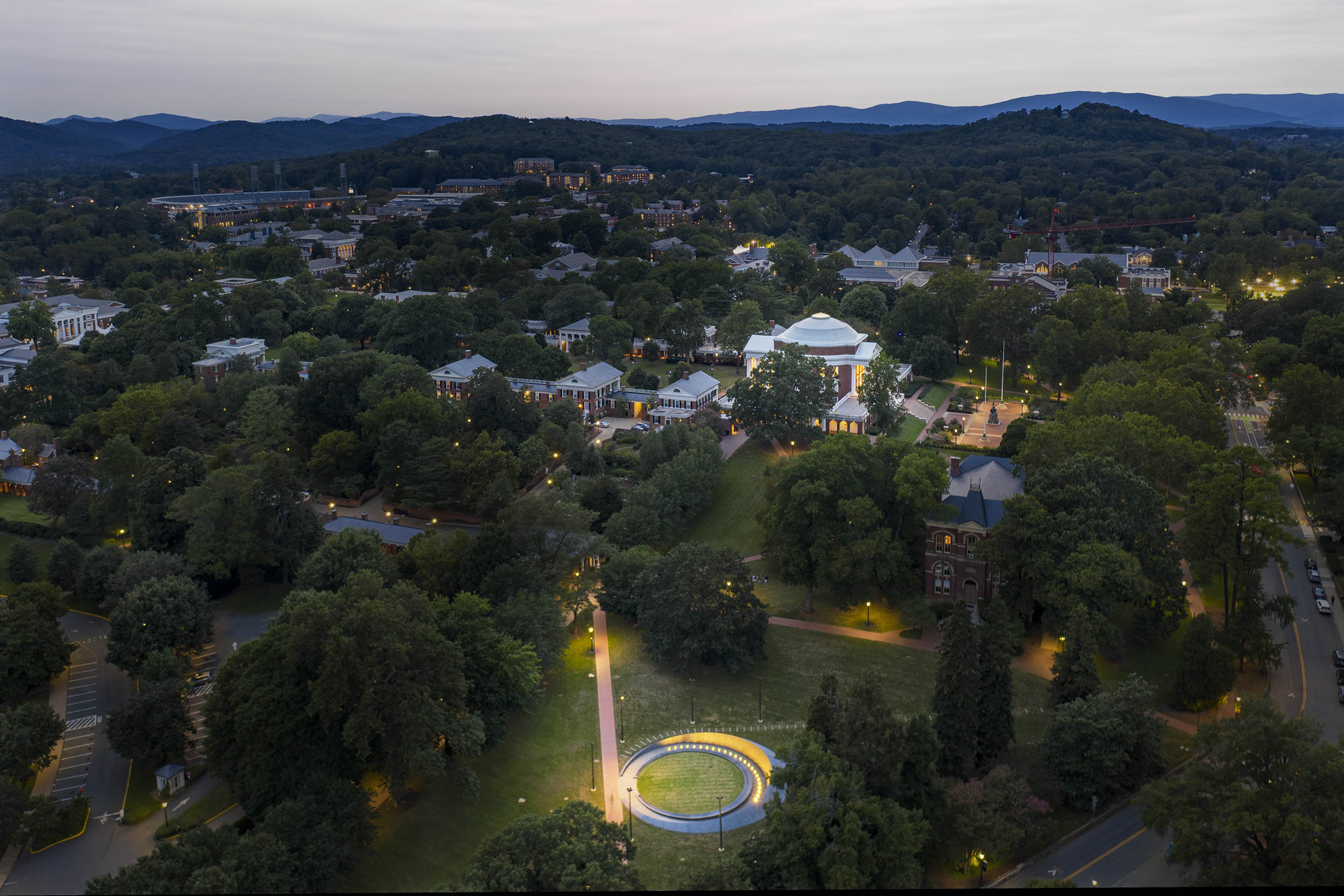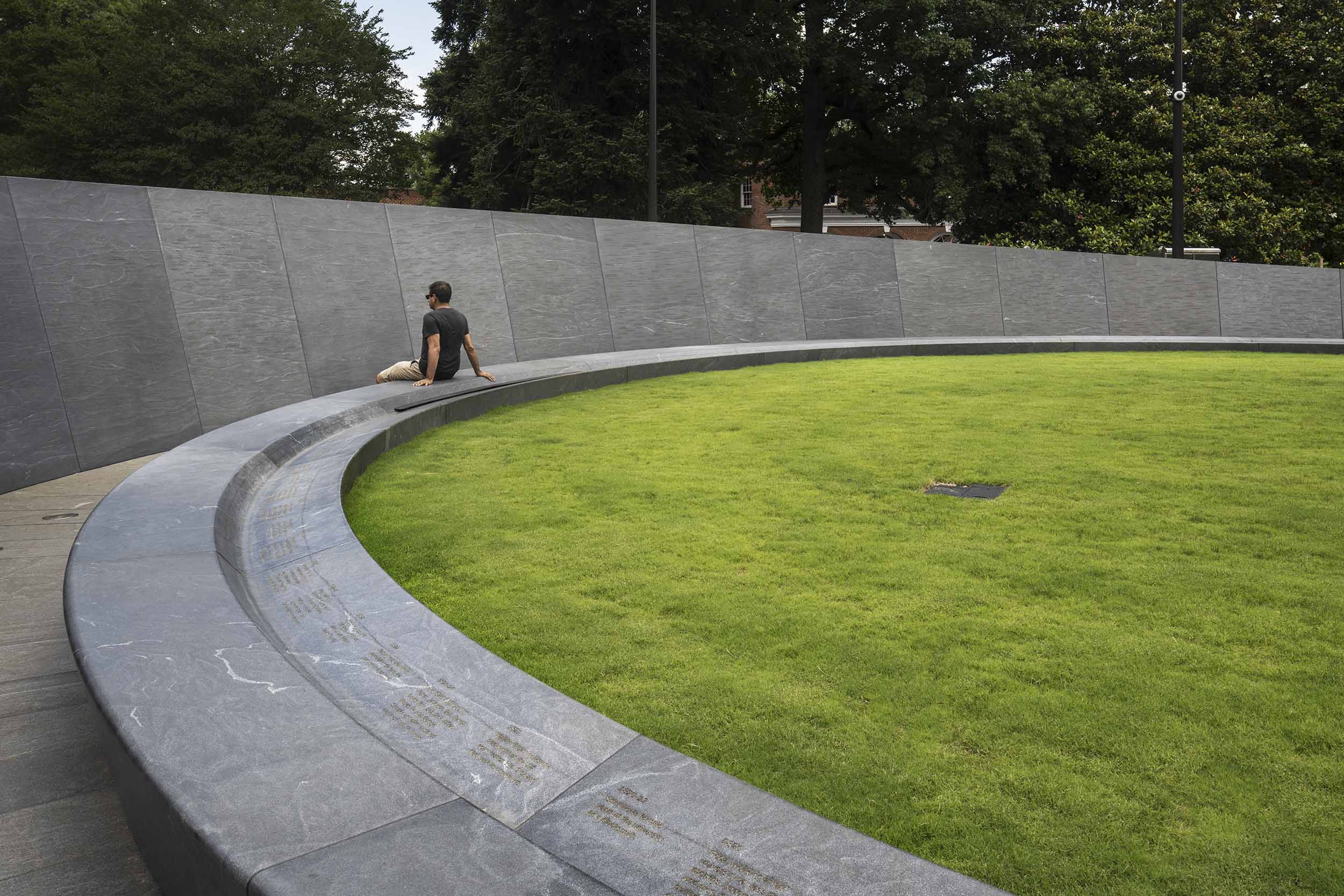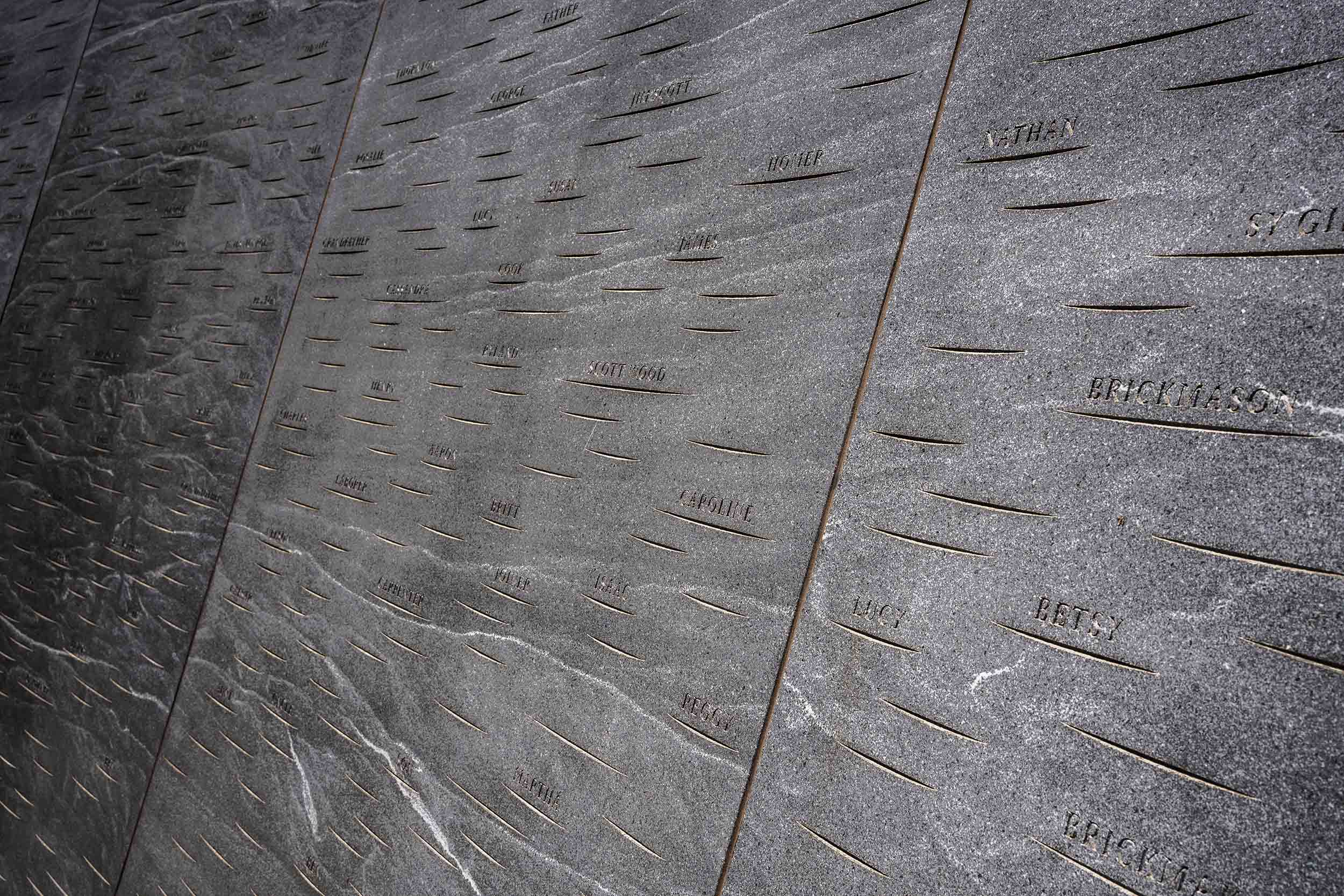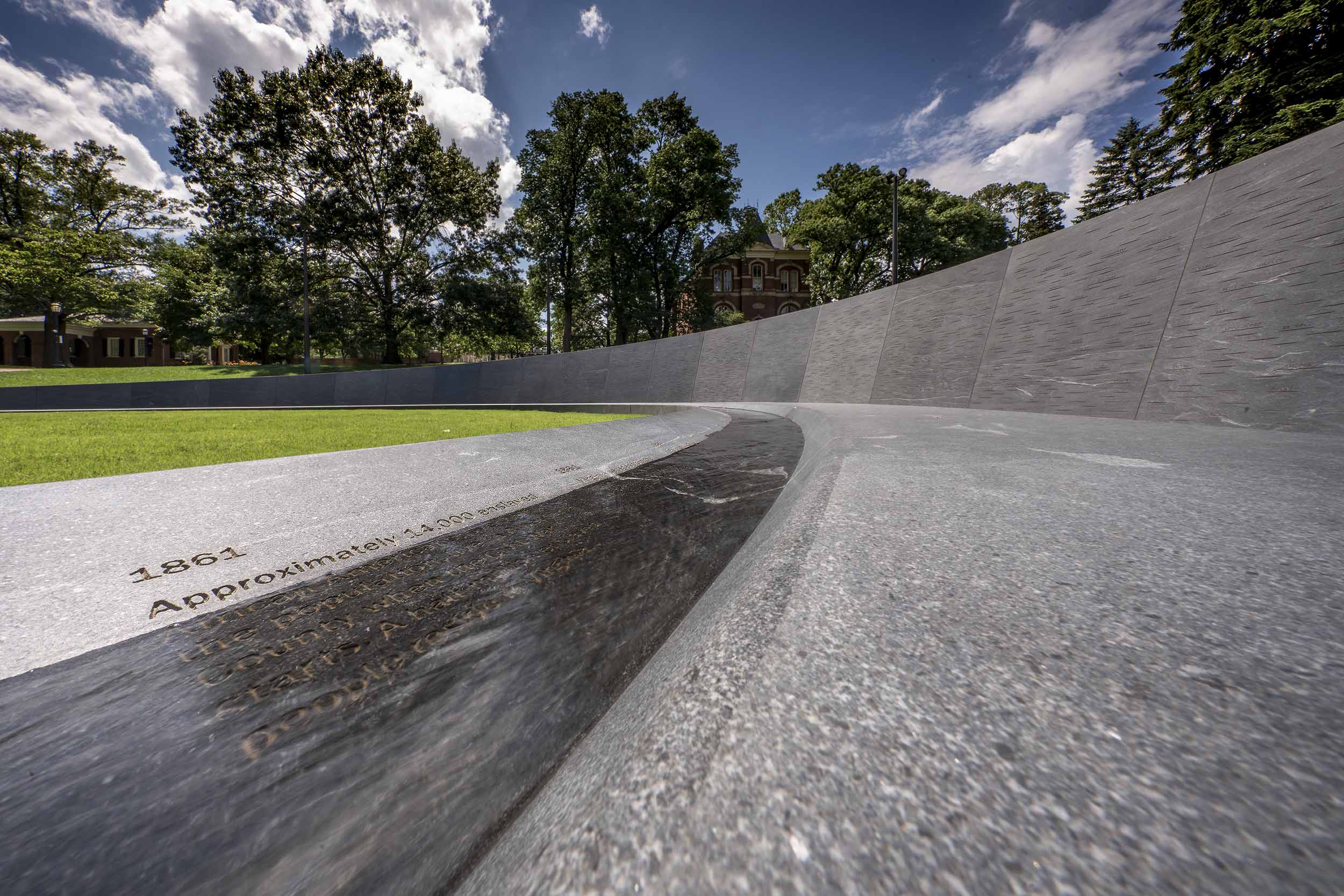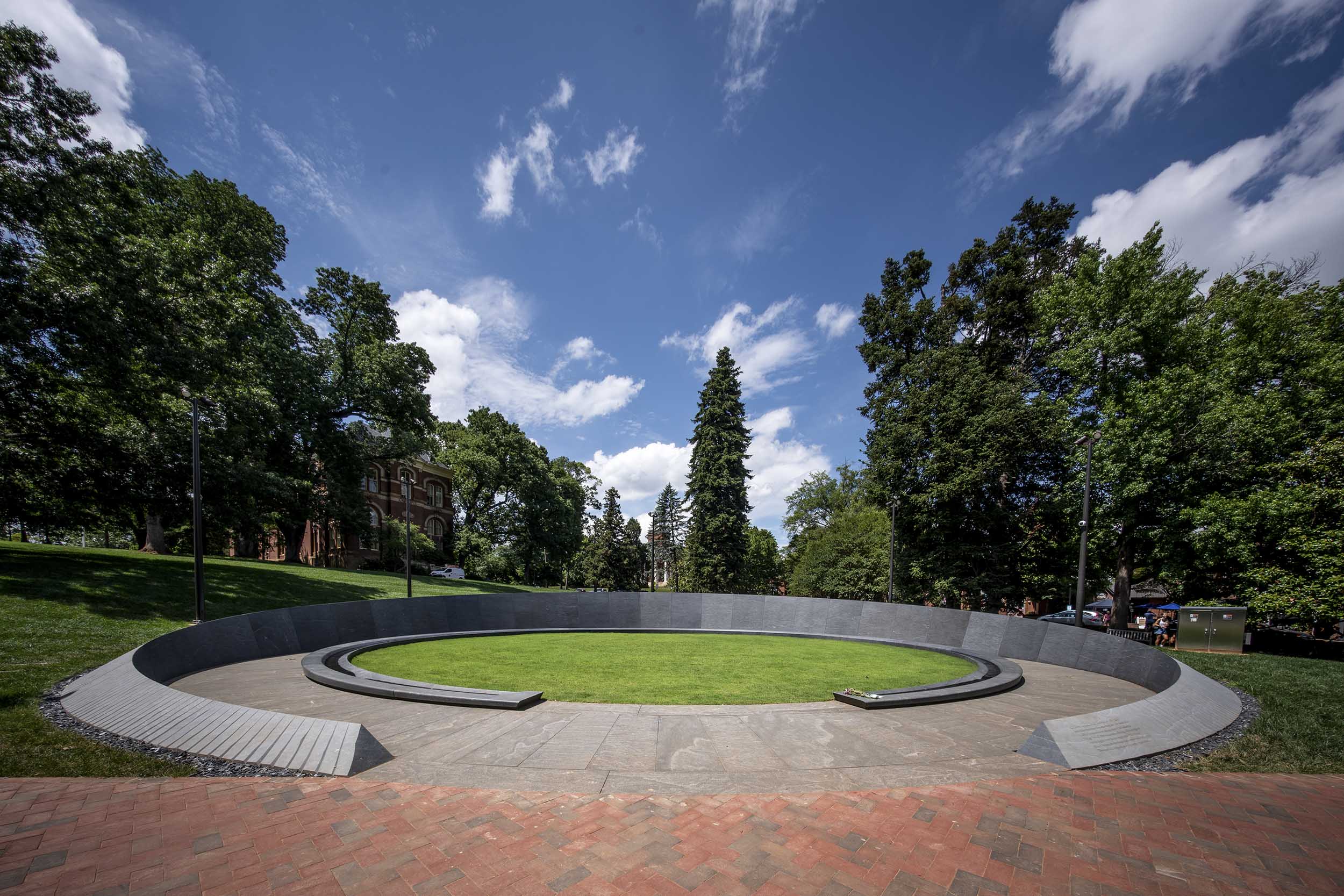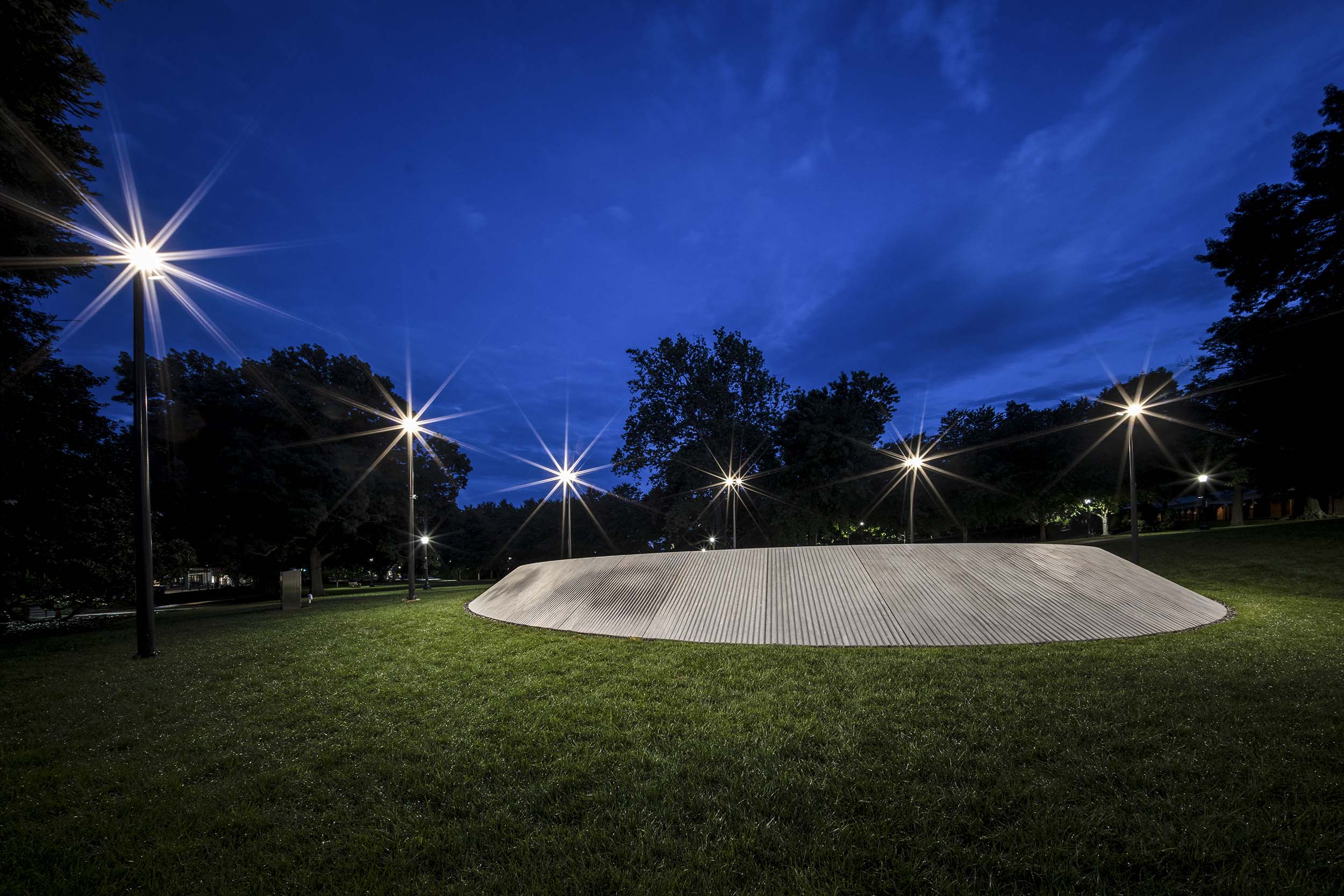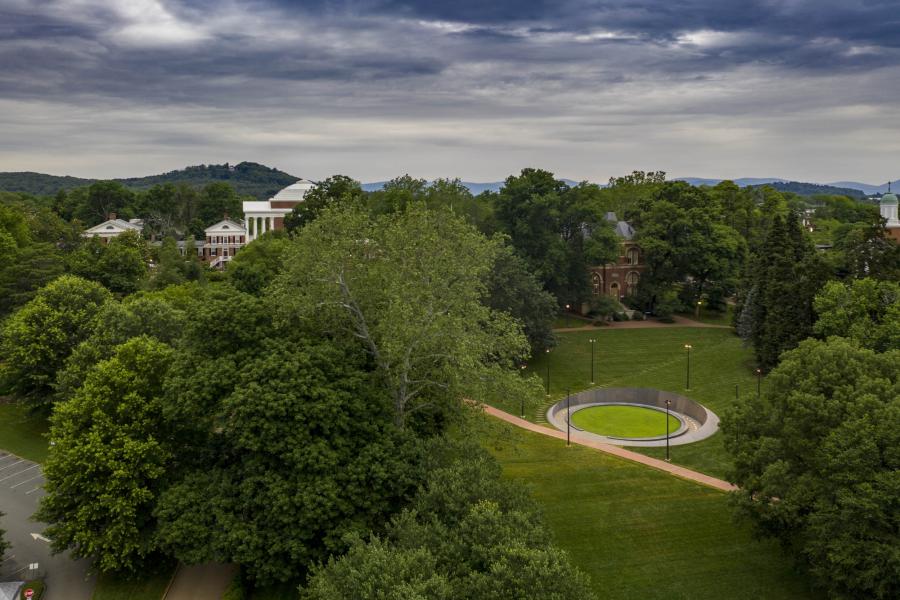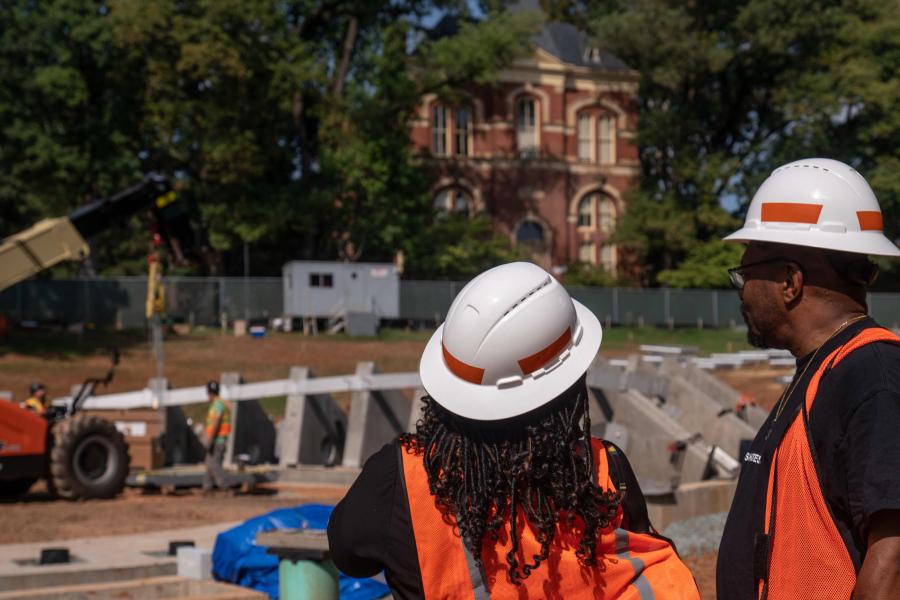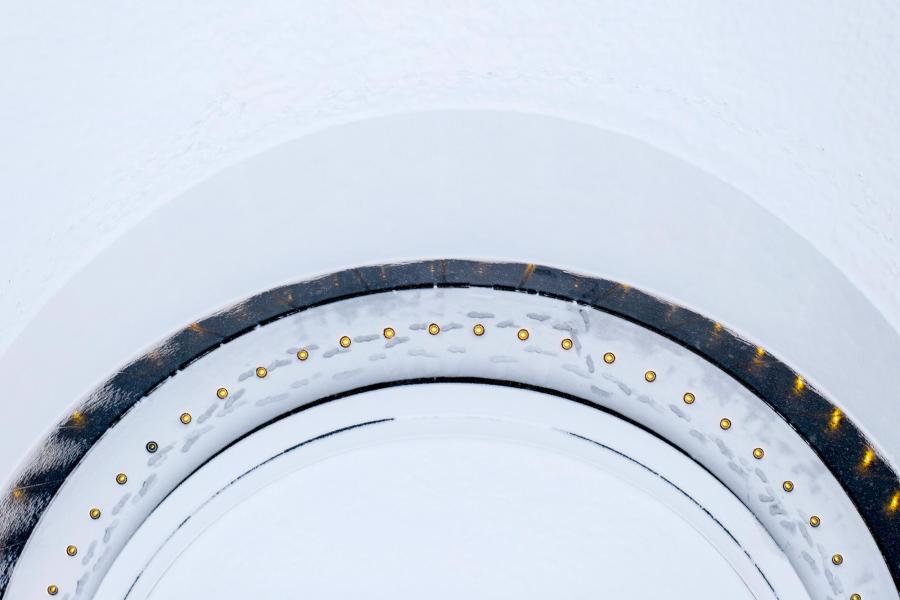The design of the new Memorial to Enslaved Laborers at the University of Virginia didn’t start with images, plans or drawings.
It started with conversations.
“We didn’t go into it with a sense of what it should be, or even where it should be,” cultural historian and designer Mabel Wilson said. “We just started a series of conversations, hearing from students, from community members, faculty and from communities of descendants who are invested in trying to understand their relationships to these places.
“That’s how we started, just listening.”
Wilson, a UVA School of Architecture alumna and a professor of architecture and African American studies at Columbia University in New York City, was part of the memorial’s design team. The team, hired by UVA and its President’s Commission on Slavery and the University, also included Eric Höweler and Meejin Yoon, of the Boston-based firm Höweler+Yoon Architecture; Charlottesville landscape architect Gregg Bleam, who previously taught at the Architecture School; Frank Dukes, a Distinguished Institute Fellow at UVA’s Institute for Engagement and Negotiation; and Eto Otitigbe, a polymedia artist who creates sculpture and public installations who is also an assistant professor of art at Brooklyn College. They worked diligently with members of the Office of the Architect of the University, led by Architect for the University Alice Raucher and University Landscape Architect Mary Hughes, to shepherd the project to completion. Partnering with UVA Facilities Management, general contractor Team Henry Enterprises oversaw construction, led by superintendent Mike Spence.
